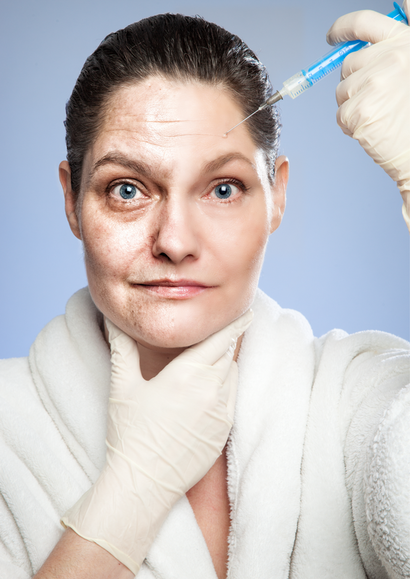|
There are many ways to maintain healthy youthful looking skin naturally. If you’ve had the opportunity to read how to optimise your skin without injectables on our free pro-aging resource page, you would’ve discovered a wealth of information on how to optimise your skin. It doesn’t cost a penny, or require a doctor’s appointment. All one needs is a bit of dedication, a change of lifestyle, and an improved diet.
Visit our pro-aging resource page
Some of us will choose to go a step further , especially when our habits, lifestyle, and diet cease to work. For those interested in different types of procedures, the next step would be to visit a doctor for a consultation on non invasive treatments that do not involve needles. Resurfacing modalities are a wonderful option for those who want to retain youthful, glowing skin. DIFFERNET TYPES OF RESURFACING MODALITIES
LASER SKIN THERAPYLasers are a modality that use both light and heat to create a controlled depth tissue injury in hopes that the body’s healing response will make the skin look better. The top layer of skin is singed off to reveal an improved fresher layer of tissue. Over injury to the tissue can deleterious consequences, and under injury to the tissue will not see enough of a result. There are many types of Lasers. One of the newest and best on the market is called Erbium. The Erbium laser is an ablative resurfacing laser that specifically targets resurfacing the top layer of the skin. It gives a nice polishing effect to the skin, and improves overall skin quality. Down time ranges from 2-5 days. Settings can be adjusted to allow for a varied amount of down time, which is great for people of different skin types, skin tones and textures.
BENEFITS OF LASER SKIN THERAPY
MICRONEEDLINGMicroneedling is a procedure that involves using a device with very thin, sharp needle tips to create punctures on the surface of the skin. Since the cuts are only on the surface, the pain is quite minimal. The science behind microneedling is that the body’s healing response will kick in to heal those surface wounds, which will result in an improved, more rejuvenated look.
BENEFITS OF MICRONEEDLING
CHEMICAL PEELSA chemical peel is a cosmetic treatment that involves the use of AHAs (alpha hydroxy acid) to remove the top layer of skin. The most commonly used AHAs in chemical peels are lactic acid, glycolic acid, tartaric acid, malic acid and citric acid along with salicylic acid (BHA). Chemical peels can be customised to suit your skin concerns. They are normally used for the treatment of hyperpigmentation, uneven skin tone, sun damage, acne, fine lines, and wrinkles. Chemical peels are unable to turn back the hands of time, and cannot do wonders for sagging skin, very deep wrinkles or pitted acne scars.
TYPES OF CHEMICAL PEELS
The majority of chemical peels penetrate the top layers of the skin. As the skin peels, the old skin cells are replaced with new ones.
Before embarking into the world of chemical peels, your skin must be assessed by a professional to determine which type of peel is best for you. Your skin tone, skin concern, and texture are all determining factors in deciding which type of peel is best suited for you.
BENEFITS OF CHEMICAL PEELS
THE DIFFERENCE BETWEEN AHA & BHA PEELS
AHA peels which consist of glycolic acid, lactic acid and mandelic acid exfoliate the top layer of the skin. The most commonly used contain glycolic acid, and lactic acid. Lactic acid is much gentler than glycolic acid, and is used on sensitive skin types. BHA Peels contain salicylic acid, and are used on acne prone skin. BHA peels target oiliness by penetrating into the pores to break down sebum and dirt that cause acne.
WHAT IS A RETINOL PEEL?
Retinol peels contain vitamin A, and have the ability to penetrate the skin deeper than acids due to its small molecular size. Retinol peels help to reveal new skin cells, and are great for treatment of fine lines, wrinkles, irregularities in skin texture, and sun damage. There is some peeling that occurs after the application of a retinol peel, which typically lasts 2-4 days. The final result is smoother, brighter, and healthier looking skin. SIDE EFFECTS OF CHEMICAL PEELSThere is some mild stinging or a tingling sensation that will occur during the peel before the product is removed. One should expect some redness, flaking, and peeling on the days following the procedure. Superficial peels produce mild redness to flaking, while deep chemical peels produce moderate to advanced flaking/peeling of the skin.
PRE-TREATMENT & POST-TREATMENT
Before a chemical peel you should avoid the use of all exfoliating products (both chemical and manual). It is equally just as important to avoid procedures on the face beforehand like waxing, and lasers. Aftercare is essential to ensure a good result. One must avoid manual scrubs of all kinds, products containing AHAs, BHAs, and retinol for at least one week. Avoid the sun, and wear SPF to protect the skin from darkening. During the healing process, your skincare routine should be filled with simple, gentle products that do not irritate the skin. For more advice on post-treatment, consult with your professional on the best products to use for your skin. |


